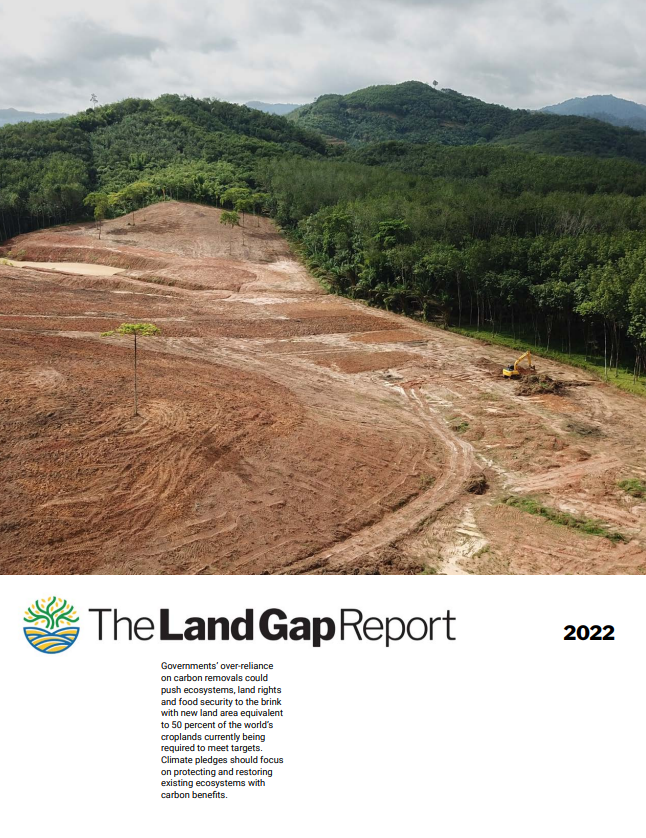The 2022 Land Gap Report underlines the importance of protecting and restoring ecosystems in climate mitigation. It signals the harmful effects of over-dependence on carbon removals, such as potential infringements on land rights and food security. Also, it offers ecosystems that can be defended and revived for carbon benefits. Ends with advice for governments and organizations to shift their attention from carbon removals to ecosystem protection and restoration.
The report underscores the significant carbon storage capabilities of boreal forests. The carbon turnover rate in these forests’ mineral soils is approximately 50 years longer than in temperate or tropical forests. Moreover, the peat in these forests’ fens and bogs can store a substantial amount of carbon, with an estimated 270 billion tonnes across the landscape.
The report criticizes the current carbon accounting rules, which only estimate annual flows, ignoring the two-way flows between land and the atmosphere. It argues that reporting net emissions in the land sector and using this data to measure progress towards ‘net zero’ emissions can be misleading, as it obscures emissions from logging and downplays the benefits of protecting and restoring forests.
The report proposes a comprehensive carbon accounting method to accurately calculate the change in atmospheric carbon stock and recognize the advantages of forests and other ecosystems. It also highlights the need for reference levels that reflect the full range of carbon dynamics at landscape scales and represent the maximum carbon storage in primary forest ecosystems under natural disturbance regimes.
Chapter 1: Introduction
Highlights the dangers of excessive reliance on carbon removals, advocating for a shift in climate commitments to protect ecosystems, land rights, and food security. The authors propose agroecology to bridge the “land gap” and prevent further harm to biodiversity and climate due to unsustainable land use. The report also calls for a change in agricultural and food systems to adapt to global warming.
Chapter 2: The Land Gap
Points out the disparity between the land required to achieve climate targets and available land, warning against excessive reliance on carbon removals. It suggests protecting and restoring existing ecosystems for natural carbon sequestration. It calls for a comprehensive carbon accounting system for accurate carbon stock measurement and understanding the mitigation benefits of forests and other ecosystems.
Chapter 3: Forest Ecosystem Protection and Restoration
Emphasizes the importance of forest protection and restoration for climate mitigation and biodiversity resilience. It identifies the negative effects of fragmentation due to infrastructure for logging, mining, and transmission lines and advocates for revitalising secondary natural forests. The report also underscores the need to preserve all remaining primary forests from deforestation, degradation, and fragmentation and supports the rights and livelihoods of the Indigenous custodians of these forests.
Chapter 4: Land Rights of Indigenous Peoples and Local Communities
Lands and forests managed by indigenous peoples and local communities are crucial for climate change mitigation and restoration, yet less than 20% of these lands are officially recognized as theirs. The report calls for a social justice approach to land-based climate commitments, including a transparent process for recognizing and protecting land rights, preventing land grabs, and ensuring the representation and involvement of all impacted people.
Chapter 5: Agroecology for Socioecological Resilience
Agroecology, which manages biodiversity in agricultural areas, creates efficient, stable, and diverse production systems, enhancing socio-ecological resilience and supporting livelihoods and human rights. It requires more institutional support to fully realize its potential in climate change adaptation and mitigation, food production, and human rights advocacy.
Chapter 6: Conclusions and Recommendations
Calls for a systematic approach to climate change mitigation, advocating for dismantling high-emission industrial agriculture and increased investment in agroecology. It emphasizes the importance of an international policy framework supporting agroecology, forest management strategies that respect ecosystems, and the recognition of land rights of indigenous peoples and local communities. The report highlights the need for systemic changes to foster climate-resilient agriculture and mitigate climate change.
In addition, a Land Gap Report Briefing Note: 2023 Update was published on November 23.
The 2022 Land Gap Report




